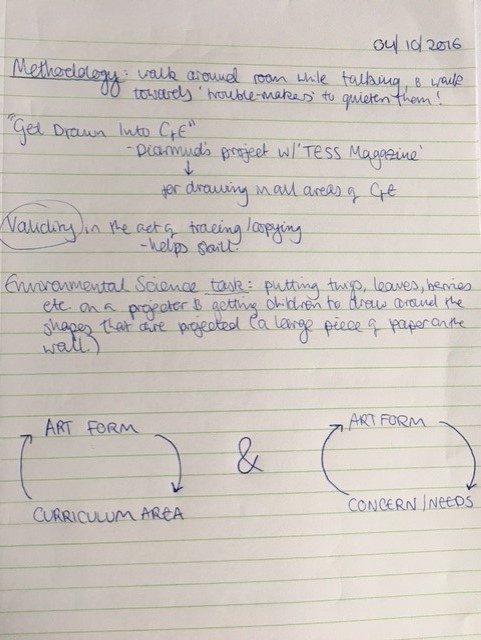Today, we had Dance Class. After working on our routine we have now collaborated with other groups to make a larger dance with each group’s individual routines blending into the next group’s. What I’ve taken away from this is that children can slowly build up confidence and understand group work skills can be collaborated, like a network of ‘skill’ blocks, which (when everyone engages and contributes) results in a well-earned end goal. Children may then have a further understanding of individual departments (a group) contributing to one ideal(a larger group, a company), which is an intrinsic skill for later life. This was also useful for me as a learner because I got to learn how dances can be put together, from simple steps. This helped give me ideas as a teacher on how to create a dance with a class that was made of the children’s ideas and contributions.
https://www.youtube.com/watch?v=bsE5p8LgHs8
Our group’s stimulus: 
The finished routine for the whole class: 
Later in our Art class, we learned to be resourceful as teachers (which should trickle down to the children and teach them to be resourceful). We learned about making paint brushes with unusual material. This not only saves resources and money, but also challenges us as teachers to be imaginative (a skill that is prevalent in the Arts). Diarmuid described a scene and we were to paint it without seeing any images. This gets us in the mind-frame of the child and lets us express our creativity through imagination. This also stops merit being given to children who are gifted at copying, and instead merit is given to effort and creativity, as there are no correct or wrong answers.
I documented my progression with the picture as it is good for development to see a beginning, a middle and an end. I also documented my ‘paint palette’, as it’s good to see the tools someone has available to them to really appreciate the outcome of the work. That is to say, if someone made a fantastic piece of art from very few materials, it shows resourcefulness and adaptability.



For next week: 
I have purchased this book to have a read over and hopefully become more acquainted with Drama, as this isn’t something I ever took in school. We have another Drama input next week so I plan to read some portions of this as ‘homework’ to be better prepared and possibly have questions.
Ackroyd, J. and Boulton, J. Drama Lessons for Five to Eleven-Year-Olds. (2008) 6th ed. New York: Routledge




